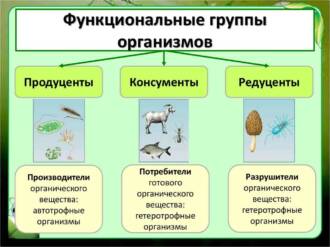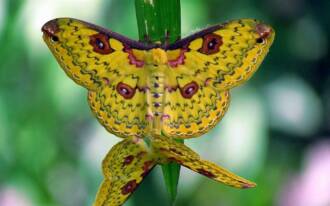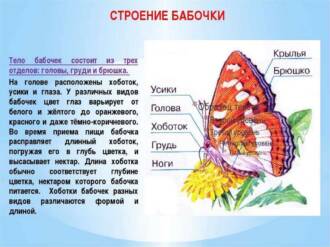
Butterfly This is an insect that causes delight and surprise in people of all ages. They are bright, colorful and graceful, their unique beauty attracts attention and inspires many. But what are butterflies really?
Butterfly it is one of the largest orders of insects, which includes about 180,000 species. They have a unique structure and adaptations that allow them to survive and reproduce in various conditions.
The butterfly consists of several main parts. Her body consists of a head, chest and abdomen. On the head there are antennae, eyes and a proboscis, which is used for feeding. On the chest there are pectoral legs and wings, which serve for movement and protection. The abdomen contains internal organs such as the heart, intestines, and reproductive organs.
It is known about butterflies that they go through a complex life cycle, which includes several stages: eggs, caterpillars, pupae and adults. Each stage has its own unique form and function that allows the butterfly to survive and develop.
Butterflies are amazing creatures that arouse admiration and interest among people. Studying their diversity and behavior allows us to gain new knowledge about nature and ecosystems, as well as understand the importance of preserving and protecting their habitats.
Why are butterflies so attractive to study?
Butterflies are amazing creatures that attract the attention of researchers and nature lovers around the world. They are one of the most beautiful insects, with bright colors and unique patterns on their wings. The wide variety of shapes and colors that butterflies have makes them attractive subjects to study.
A butterfly is an insect that goes through a metamorphosis, undergoing significant changes in its life. It starts as an egg, from which caterpillars hatch. The caterpillars feed and grow until they reach maturity. Then they turn into a chrysalis, inside which fantastic transformations occur. Finally, an adult butterfly emerges from the chrysalis, ready to fly and reproduce.
Butterflies are built from complex structures and organs. Their wings are covered in tiny scales that give them their distinctive appearance and vibrant colors. Some butterflies are able to migrate long distances, crossing oceans and mountain ranges. They also play an important role in plant populations as they are pollinators and help in dispersing pollen.
Studying butterflies allows you to learn more about nature and the ecosystem in which they live. They are indicators of the state of the environment and can indicate changes in climate and habitat. In addition, butterflies are objects of study for various sciences, such as entomology, evolutionary biology and ecology.
Butterfly Biology: Basic Facts

Butterflies are insects that belong to the order Lepidoptera. They are one of the most beautiful and amazing groups of insects. Butterflies have a unique structure that distinguishes them from other insects.
The structure of a butterfly includes three main parts: head, chest and abdomen. There are antennae on the head that help butterflies navigate in space and find food. The eyes of butterflies have a complex structure and allow them to see in a wide range.
Butterflies have two pairs of wings that are covered with fine microscopic pollen called scales. The scales give the wings bright and colorful colors. Butterfly wings not only serve to fly, but also to attract the attention of males and females during breeding.
It is known about butterflies that they go through several stages of development. Initially, the butterfly is in the form of an egg, from which a caterpillar emerges - the first stage of development. Caterpillars feed on plant food and grow actively. After this, they turn into a chrysalis, in which metamorphosis occurs and an adult butterfly is formed.
Butterflies are a very diverse group of insects. There are about 180,000 species of butterflies in the world, each with its own unique features and characteristics. They can vary in size, wing shape, color, and lifestyle. Some butterflies are small and inconspicuous, while others are very large and bright.
In conclusion, butterflies are amazing creatures of nature that attract attention with their bright colors and graceful flight. Studying the biology of butterflies allows us to better understand this unique world and preserve it for future generations.
Butterflies: where do they come from?

It's a butterfly a beautiful and graceful creature belonging to the class of insects. But what are butterflies and where do they come from?
Butterflies are part of the amazing life cycle of insects. They go through several stages of development: from egg to caterpillar, then a transformation occurs in the pupa and, finally, a colorful butterfly emerges from the pupa.
What is a butterfly made of? Externally, the butterfly consists of delicate wings covered with thin scales. She also has six legs and two pairs of wings, giving her the ability to fly. The butterfly structure also includes a proboscis, with which they feed on the nectar of flowers.
Butterfly is an insect, which lives in various ecosystems, from forests to gardens and fields. They are important pollinators and play an important role in plant distribution.
So, about butterflies we can say that they are amazing creatures, undergoing an amazing transformation from an egg to a beautiful butterfly. Not only are they important members of the ecosystem, but they also bring joy with their beauty and grace.
Unique features of butterfly breeding
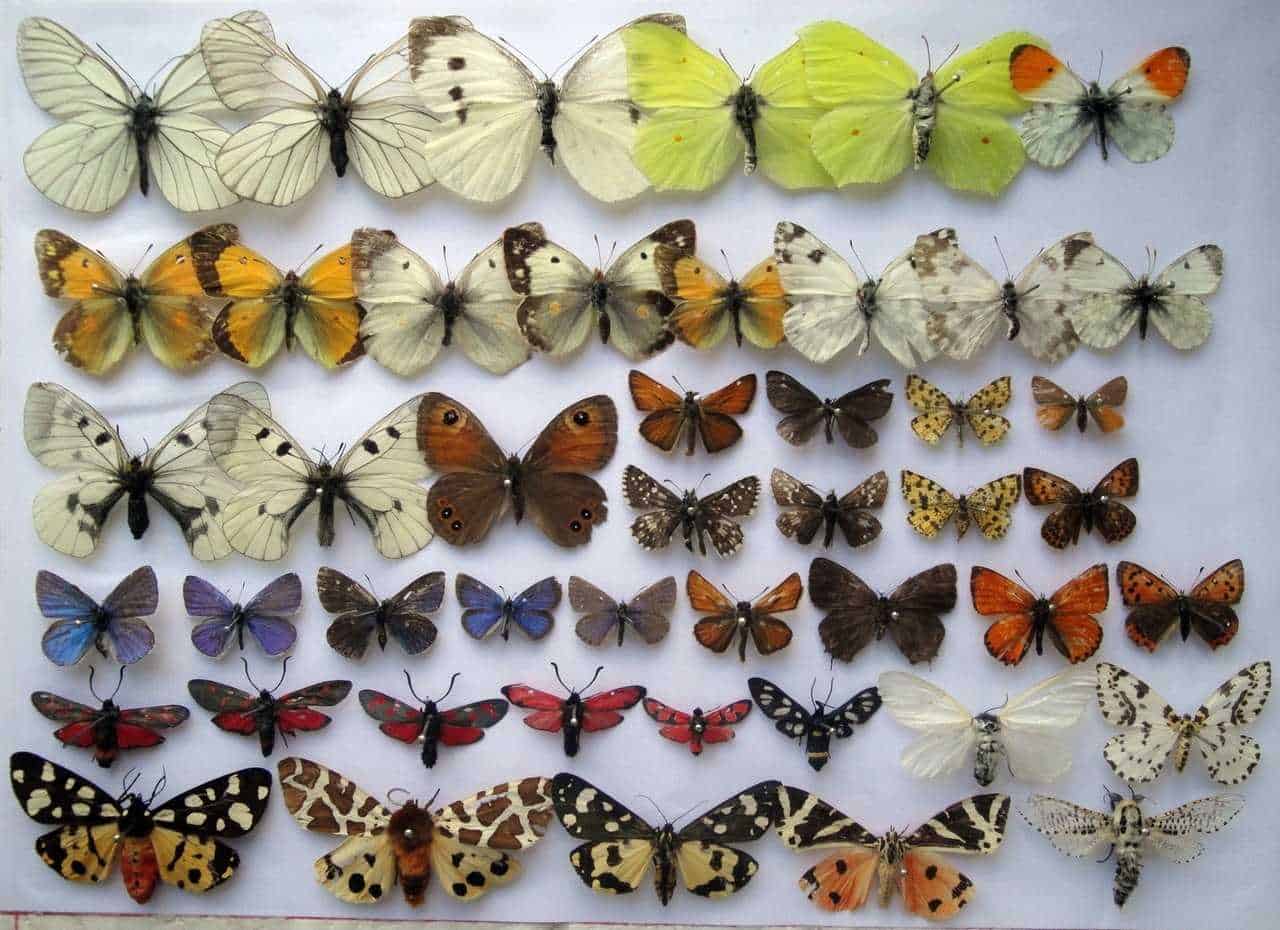
A butterfly is an insect belonging to the order Lepidoptera. It is known about butterflies that their reproduction has a number of unique features.
Butterflies are males and females that reproduce sexually. What are butterflies? Butterflies are insects with wings covered in small scales that form a variety of patterns and colors. What is a butterfly made of? It consists of a head, chest and abdomen, as well as a pair of front and rear wings.
It is known about butterflies that they have a special organ called a sponge, which is used for feeding. Male and female butterflies also have reproductive organs, which are necessary for reproduction.
What is a butterfly? A butterfly is an amazing creature capable of producing amazing metamorphoses. Butterfly eggs laid by the female on plants turn into hungry and active caterpillars. The caterpillars feed on plant matter and grow until they reach their final size.
Then the caterpillar turns into a pupa, in which internal transformation and formation of a butterfly takes place. After some time, the pupa splits and an adult butterfly emerges. Thus, butterfly reproduction is an amazing and complex process that continues throughout the life of these magical insects.
Variety of colors and shapes of wings

Butterflies are amazing insects that attract attention with their bright and varied wings. They are among the most beautiful and unique creatures in the natural world. Butterfly wings come in a variety of colors and shapes, making them truly magnificent works of nature's art.
One can say about butterflies that they are real artists. Thanks to millions of tiny scales covering their wings, butterflies acquire brightness and variety of colors. These scales can be of different colors: from delicate pastel to bright and rich. In addition, they can have various patterns and designs, which can be random or complex and symmetrical.
Butterflies have different wing shapes, which also vary from species to species. Some species have wide and rounded wings, others are narrow and sharp, and still others are elongated and narrow. The wings may be flat or slightly curved, with raised or lowered edges. This variety of wing shapes allows butterflies to be adapted to different environmental conditions.
Butterflies are true wonders of nature, the embodiment of beauty and elegance. Their variety of colors and wing shapes makes them unique and attractive to anyone interested in the animal kingdom. Researching and studying butterflies allows us to better understand the nature and diversity of life on our planet.
The important role of butterflies in the food chain

A butterfly is an insect that plays an important role in the food chain. They are one of the main food sources for many animals such as birds, bats, lizards and even some mammals. Butterflies are not only beautiful creatures, but also important participants in the ecosystem.
It is known about butterflies that they go through several stages of development: from egg to caterpillar, then pupa and finally to adult insect. The structure of butterflies is also unique. They have wings covered with thin scales, which give them brightness and a variety of colors. Butterflies also have a proboscis, with which they feed on the nectar of flowers.
What are butterflies that play an important role in the food chain? First of all, they serve as pollinators. As they move from flower to flower in search of food, they accidentally transfer pollen, helping to pollinate plants. Without butterflies, many plants would not be able to reproduce and continue to exist.
What is a butterfly made of? They are composed of various organs and systems that allow them to survive and perform their functions. For example, they have a nervous system that allows them to navigate in space and find food. They also have a digestive system that helps them digest and absorb food.
Thus, butterflies are not only beautiful and amazing creatures, but also important participants in the food chain. They not only pollinate plants, but are also a source of food for many animals. Without butterflies, the ecosystem would become less diverse and vulnerable. Therefore, it is important to preserve their place in nature and take care of their habitat.
Distribution of butterflies around the world

Butterflies are insects that have wings covered with tiny pollen. Most butterflies have long legs and a proboscis, which is used for feeding. They also have a complex wing structure made up of numerous veins and membranes. Butterfly wings allow them to fly and move through the air.
Butterflies are distributed throughout the world, with the exception of the Arctic and Antarctic regions. They live in a variety of environments, including forests, fields, gardens and even mountainous areas. Butterflies are important plant pollinators as pollen stuck to their wings is carried from flower to flower, aiding the pollination process and plant reproduction.
Butterflies vary in shape, size and color. They can be small and inconspicuous, or they can have bright and colorful wings that serve to attract mates or warn predators of their poisonous nature. Butterflies are very important to the ecosystem as they provide food for many animals, including birds and frogs.
The study of butterflies is a subject of interest to scientists; their classification and systematics are still not fully understood. There are currently approximately 180,000 species of butterflies, with new species being discovered every year. They come in an amazing variety of shapes and colors, making them one of the most beautiful creatures on Earth.
Features of the behavior of butterflies
A butterfly is an insect that belongs to the class of Lepidoptera. Butterflies attract attention with their beauty and variety of colors. They are one of the most beautiful creatures of nature.
A butterfly consists of several parts: head, body and wings. The scales on butterfly wings act like microscopic blankets, giving them vibrancy and beauty. Butterfly wings are soft and light, allowing them to fly with little effort.
The behavior of butterflies can be different. They may spend most of their time in flight exploring their environment and searching for food. Butterflies can also show aggression when defending their territory from other individuals. Some butterfly species migrate long distances, crossing oceans and mountains to find suitable breeding and feeding sites.
Butterflies use their wings to communicate with other individuals. They can develop a variety of movements and display bright colors to attract a mate or scare off a predator. Butterflies can also use scents released by special glands on their wings or body to communicate with other members of their species.
Studying the behavior of butterflies allows us to better understand their world and interactions with their environment. Butterflies are some of the most amazing and beautiful creatures on the planet, and their behavior only enhances this beauty and mystery.
Evolution of butterflies: where did they come from?

Butterflies are insects that belong to the insect class and the order Lepidoptera. They are one of the most beautiful and amazing species on planet Earth. Butterflies are distinguished by their special structure and variety of external forms and colors. They attract attention with their bright wings and colorful patterns.
A butterfly is a complex organism made up of several parts. They have six legs, three segmented bodies, and two pairs of wings. Butterflies usually have scales on their wings, which give them bright colors and protect them from the cold. Butterflies also have fanged mouths, which help them feed on flower nectar.
It is known about butterflies that they have come a long way in evolution. They appeared on Earth about 200 million years ago and gradually developed and adapted to different living conditions. Initially, butterflies were small and unimpressive insects, but over time they became larger and more diverse.
Butterflies have a unique evolutionary history. They went through many changes to become what we see them today. They developed the ability to fly, diversified their appearance and adapted to different habitats. Due to their beauty and uniqueness, butterflies are one of the most interesting and studied groups of insects on Earth.
The influence of human activity on the world of butterflies
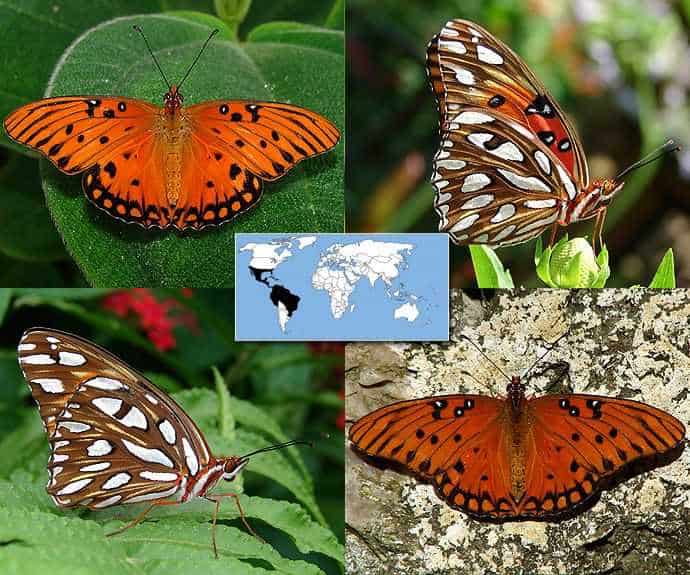
A butterfly is an insect that attracts attention with its beauty and tenderness. It is known about butterflies that they are one of the most beautiful and diverse creatures on the planet. Butterflies are amazing creatures that amaze with their structure and grace.
However, human activity has a negative impact on the world of butterflies. Butterflies have a unique and fragile structure, and they are very sensitive to changes in the environment. They depend on certain conditions for their survival and reproduction.
One of the major problems facing butterflies is the loss and destruction of their natural habitats. Due to urban expansion, deforestation and agricultural use, many butterfly species are losing their vital habitats and feeding grounds.
Also, the use of pesticides in agriculture and cities causes serious harm to butterflies. These chemicals can poison and kill butterflies, both adults and their caterpillars. The butterfly is what the body consists of, and it is very sensitive to toxic substances.
In addition, climate change is also affecting the world of butterflies. Global warming and changing weather conditions may lead to changes in the migration routes and breeding seasons of butterflies. This can lead to a decline in the numbers of some species and even to their extinction.
In general, human activities have a negative impact on the butterfly world. To preserve these beautiful creatures and their rich diversity, measures must be taken to preserve their natural habitats, reduce the use of pesticides and be more environmentally responsible.


